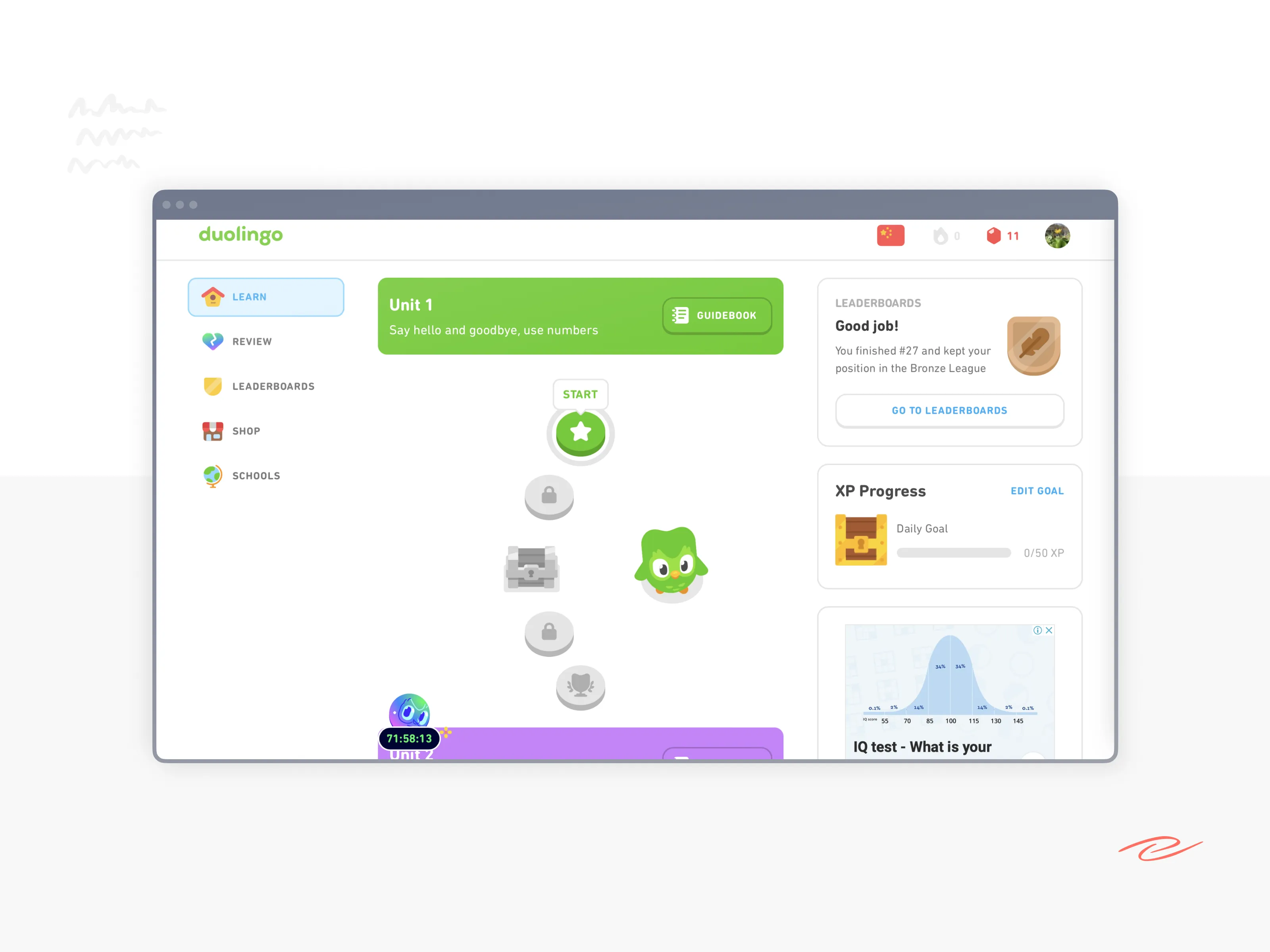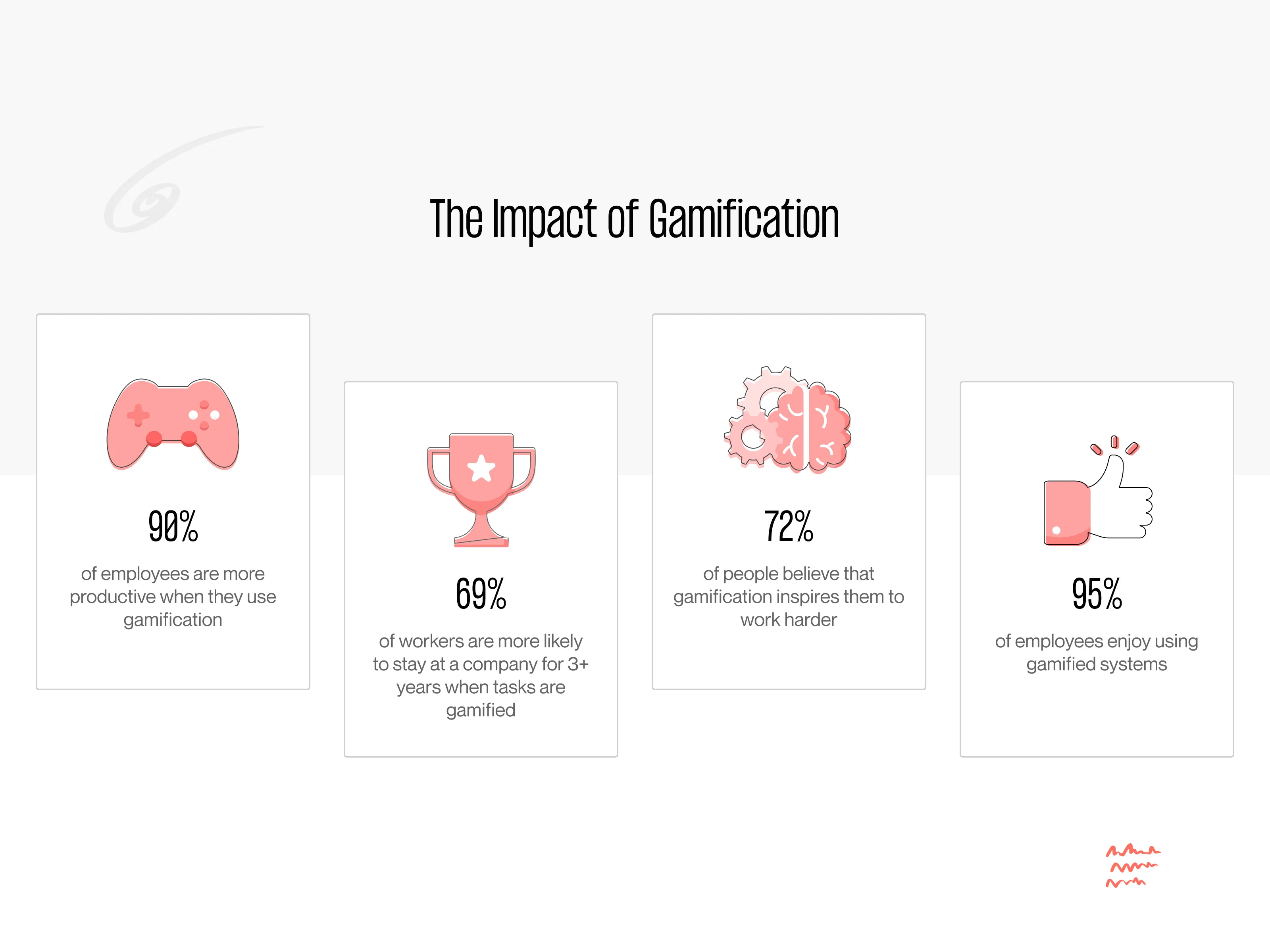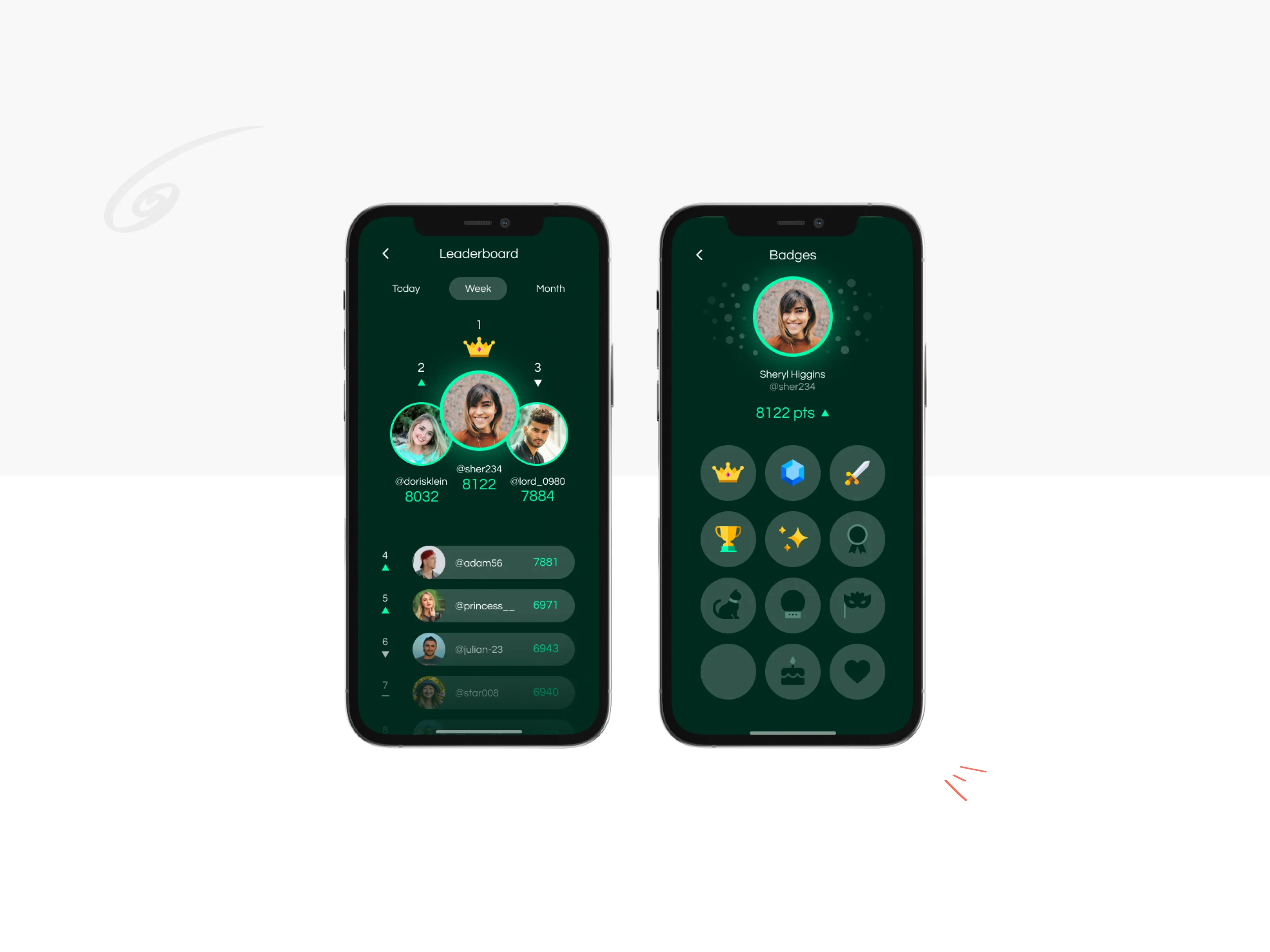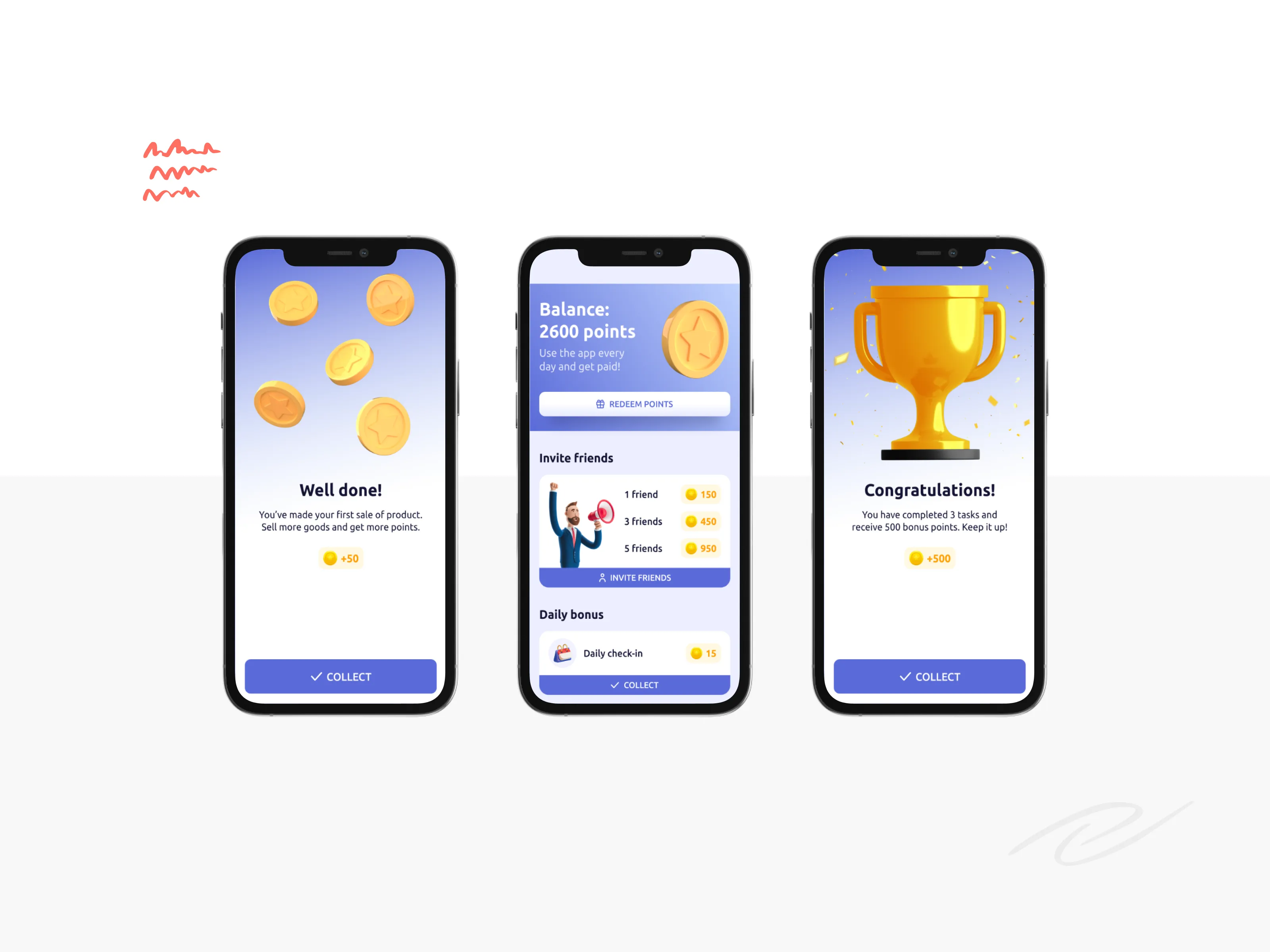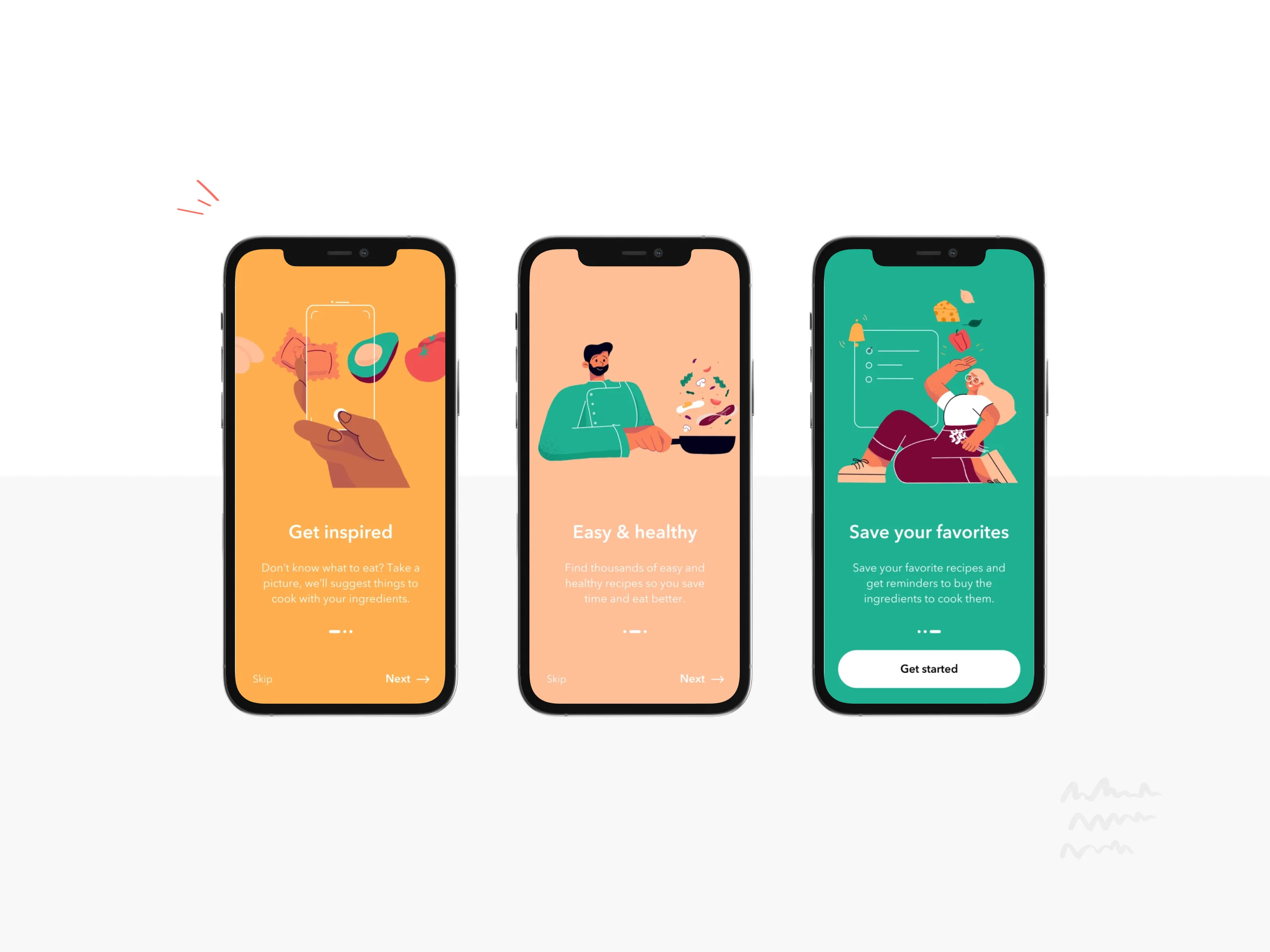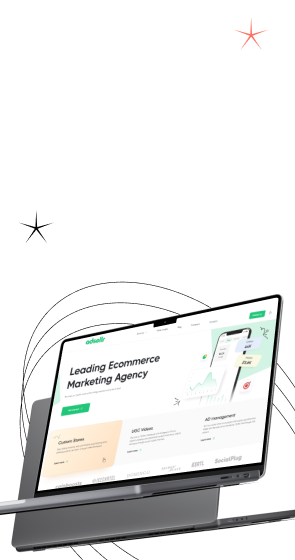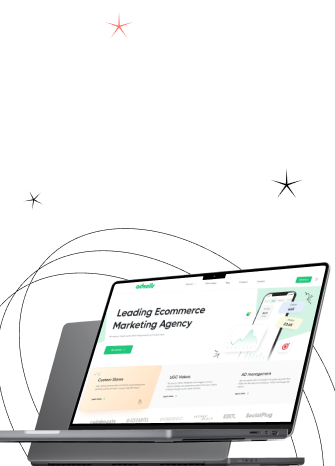By far, the game’s category is at the top of the list of most popular types in the Apple Store, accounting for 21.49% of active users. That’s something to think about and analyze. So, people like games, that’s obvious. Everyone loves games, children and adults alike. What if you gamified your app? The gamification market size will reach $30.7 billion by 2025. So it’s worth implementing gamification into your application interface to catch the user’s attention and add some lightness and positivity to his working environment.
An excellent example of gamification in UX, the simplest thing is to implement a function of rewards for users’ achievements and the possibility to share it on social networks, as Monobank did. Active users of the bank’s services can get tips for certain transactions and link them on their social pages. It’s comparable to a quest to see who collects the most. Interesting, isn’t it?
Well, in this article, we talk about the gamification of your mobile app design and the benefits it provides.

